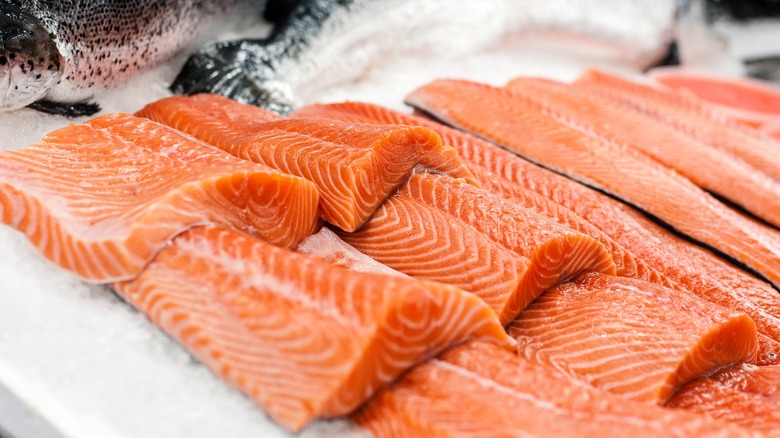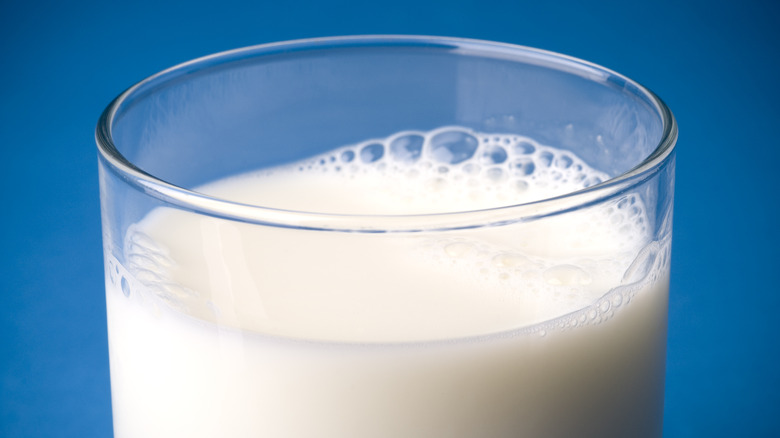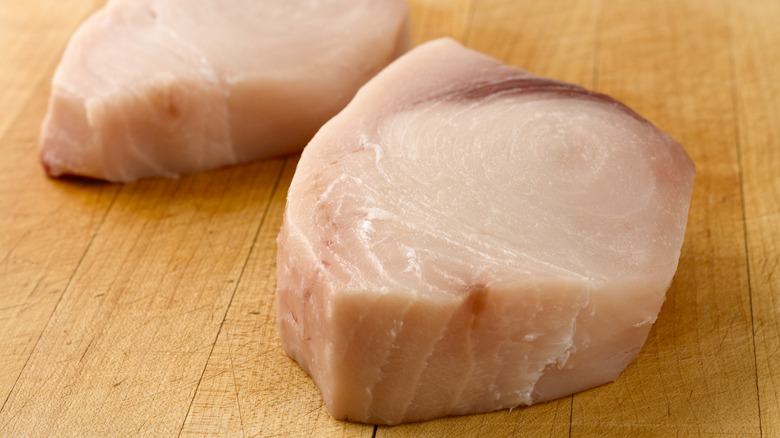The Unexpected Milk Hack For Thawing And Marinating Frozen Fish At The Same Time
Don't believe what supposed purists tell you: As long as it was properly stored, frozen fish is just as good as the "fresh" version — at least, if you live anywhere in the middle of the country. Sure, fish that's been caught that day is always going to be superior, but that's not really an option for the millions of Americans who don't live anywhere near a wild salmon-catching operation in the wilds of Alaska. Fish sold somewhere like Chicago and advertised as "fresh" has been frozen at some point during its transport cycle; the lie of "fresh" in places like that has people wrongly thinking frozen fish should be avoided.
And there are a lot of ways you can cook frozen fish to make up the difference between even it and legitimately fresh fish. One of the most interesting ones involves not only imparting flavor, but also saving time while you do it by thawing the fish in milk. This takes the natural thawing qualities of liquid immersion and combines it with the benefits of marination to do double duty.
Thawing in liquid is perfectly safe and much faster than other methods
Thawing fish or other proteins in liquid is a great way to thaw them far more quickly than just leaving them in the fridge over the course of a day. It's also much, much faster for the simple reason that water conducts heat better and far more evenly than air. It's theoretically faster to thaw this way using hot or room temperature liquid (and recent data indicates it's not inherently unsafe), but that can potentially affect the protein's texture by slightly cooking the outside (it's basically a sous vide); instead, cold liquid is better here.
It's true that typically you do want to let things thaw as slowly as possible, especially if they have a high water content. This keeps cell wall disruption to a minimum and preserves a food's texture as much as possible. But thawing in water actually prevents this from being an issue, because the water absorbs heat as food is thawing and ensures all parts of it thaw evenly. Typically, water immersion thawing sees little to no drop in texture quality. Enter milk, which is a pretty classic marinating liquid.
If you thaw in milk, you cut your prep time in half
The idea here is to totally submerge the fish in a baking dish with milk and herbs, then leave it in the fridge for at least eight hours — not only will this allow the liquid time to thaw, but it will also do a marinade's classic work of imparting flavors as it does so. Afterward, remove the thawed fish from the milk, pat it dry (don't rinse it; this is a marinade, after all), and cook. You're typically going to want to use a cooking method like baking here; excess liquid makes searing much more difficult, which is the reason some cuisines rely on marination after the protein is cooked.
All in all, thawing and marinating fish in milk is great not just for what it does for flavor, but also for how it saves time. You don't have to spend half a day waiting for your fish to thaw, and then another eight hours letting it marinate; just do both at once and make sure your fish is ready for dinner.


